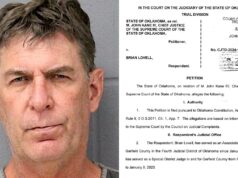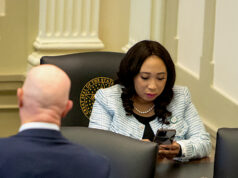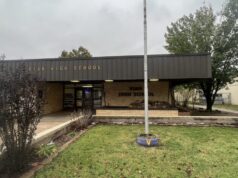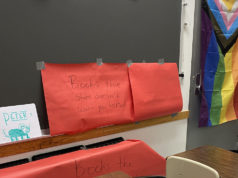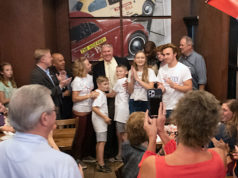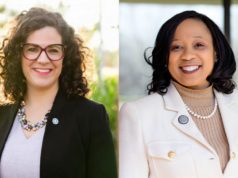As was true with some 800 other protests across the nation – where hundreds of thousands of people joined the March for Our Lives – students led March 24’s event in Oklahoma City. In all, an estimated 3,500 people marched more than 10 blocks from the Oklahoma County Election Board at 4201 N. Lincoln Blvd. to the Oklahoma State Capitol.
Students from rural, inner-city, magnet, charter, suburban and exurban schools brought a great diversity of views. Some were focused on the mass killings at schools. Others addressed dangers in their neighborhoods and the overall culture of violence. Some had reached clear conclusions, demanding bans on assault weapons and gun ownership by persons with histories of mental illness and violence, while others stressed tighter regulations as the more practical approach.
Rosecrants, Pittman address crowd
The diverse crowd gathered in a ZIP code where the gun mortality rate is 20 times the national average. Former state senator and current gubernatorial candidate Connie Johnson participated in the march, but only two legislators – Rep. Jacob Rosecrants (D-Norman) and Sen. Anastasia Pittman (D-OKC) – addressed the crowd.
The rally could mark a transition from decades of the National Rifle Association’s dominance, which gained national prominence in the 1990s after defeating Oklahoma’s then-rising star, former U.S. Rep. Mike Synar, for supporting the Brady Bill. Synar’s transgression was voting for tougher gun restrictions, including a five-day waiting period for handgun purchases, background checks and a ban on assault-rifle purchases.
After mass murder has followed mass murder, a new generation of leaders rejects the past practices of NRA obedience. As one sign proclaimed, “The Only Thing Easier To Buy Than A Gun Is A Republican Legislator.”
Notes from ‘Confrontation Generation’
Students were united in opposition to the idea of arming teachers. Many students also praised teachers who broke with their paced curriculum schedules to allow for research and class discussions about school shootings.
A couple of promising student journalists were interviewing marchers. These students were professional and balanced. When I probed deeper, they openly expressed disagreement with many or most of the marchers, but they did so in a constructive, respectful manner.
A John Marshall student offered a nuanced and pragmatic appraisal of the challenges for implementing gun regulations. I especially appreciated the way he analyzed both the culture of violence and discriminatory way the criminal justice system works in the North Highland neighborhood. Meanwhile, a Classen SAS student had done a thorough international baccalaureate study on gun control. He expressed hope that legislators will read his research.
My favorite image of the march was Harding Fine Arts students wearing blue T-shirts declaring themselves, “Confrontation Generation.”
Youth champion reality, facts over ideology
Clearly, the NRA has been willing to subordinate humanity to politics, but I was also struck by the numbers of marchers of all ages who see this moment as a victory for reality-based governance as opposed to the vitriolic alternative facts of recent years. They link this march to the teacher walkout, the Women’s March and to the grassroots resistance against Trumpism. Over and over, I heard marchers say that the realities faced by all types of Americans are moving the nation to action.
It’s no surprise that students are organizing for humanity, but it is ironic that it is these types of young idealists who are engaging in the grown-up practice of placing fact-based policy over ideology. It’s inspiring that Oklahoma’s kids are showing the maturity and judgment required to connect the dots that both explain the causes of gun violence while articulating political solutions.










